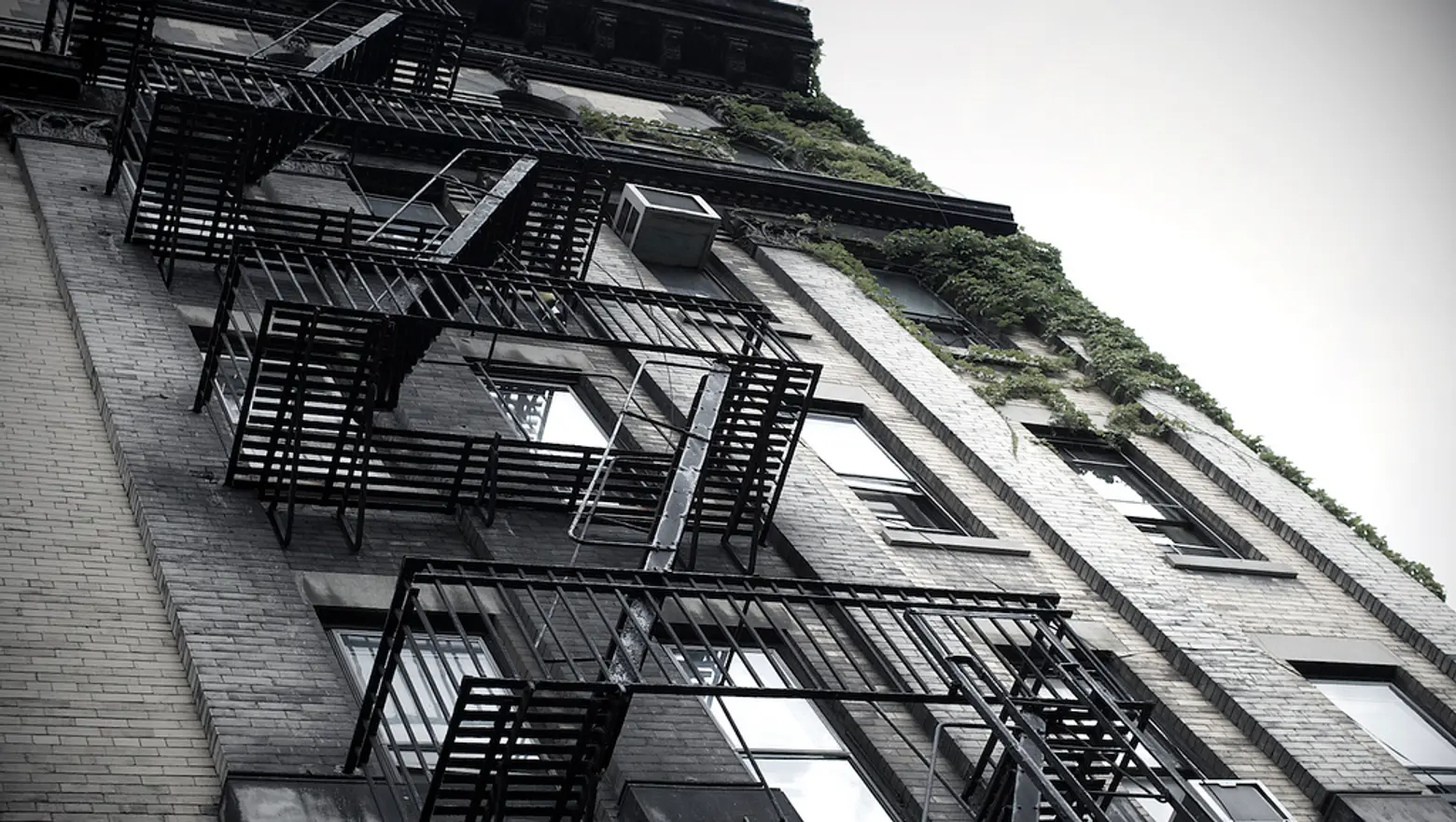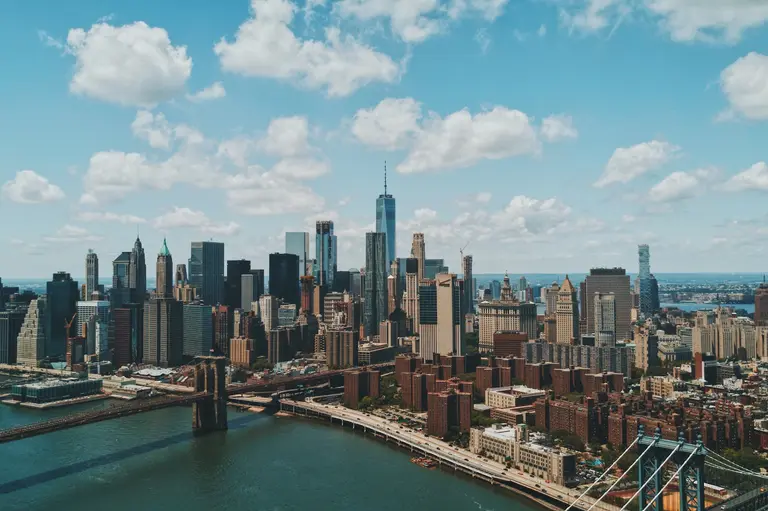Fire Escapes Going Extinct as Building Codes Shift

The outdoor fire escape has long been a fixture in the New York City streetscape, but more and more buildings are losing their iron appendages now that fireproof interior stairwells are seen as the emergency exit of choice, reports the Post. Moreover, the fire, buildings and city planning departments are amending fire safety rules in response to the influx of supertall towers to allow for “more occupant-evacuation elevators that can be used to move people down a tower in the event of an emergency.” While the new regulations are progressive and safer, losing the fire escape architecture is like losing a piece of New York City history.
Fire escapes were born out of a tragedy during a time when population was booming and multi-family tenements were quick to rise. But these structures were “constructed with low-quality materials that were quick to burn, and the cramped interior spaces were filled to well over their capacity,” notes Off the Grid. In 1860, a fire ripped through a six-story tenement at 142 Elm Street (today’s Lafayette Street), killing ten women and children. In response to the disaster, the city passed “An Act to Provide Against Unsafe Buildings in the City of New York,” which regulated tenement construction and said that “In all dwelling-houses which are built for the residence of more than eight families, there shall be a fire-proof stairs, in a brick or stone, or fire-proof building, attached to the exterior walls…or if the fire-proof stairs are not built as above, then there must be fire-proof balconies on each story on the outside of the building connected by fire-proof stairs…All ladders or stairs from upper stories to scuttles or roofs of any building, shall if movable, be of iron, and if not movable may be of wood; and all scuttles shall be not less than three feet by two feet.” Following the 1911 Triangle Shirtwaist Factory fire, these regulations became stricter. But the design of fire escapes also became more esthetically focused, with architects employing whimsical wrought iron creations or unusual, curving forms.

Via escape. via photopin (license)
In 1968, the building code was changed to reflect the city’s taller buildings and more common use of fire detection systems. It prohibited exterior fire escapes for new buildings, but those already with the stair systems in place could only have them removed if the Department of Buildings saw evidence of another safe exit. Architect Joseph Pell Lombardi “has removed fire escapes from dozens of Manhattan buildings, many of which were early 20th-century additions and not part of the original design,” reports the Post. He told the paper, “It’s twofold: It’s aesthetics, in that it looks nicer both outside and in, but it’s also safer.” In a current Soho project where they’ve been removed, Lombardi is outfitting the building with an interior fireproof stairway with self-closing doors, a connection to neighboring stairwells, and a deluge sprinkler system. Sara E. Wermiel, a construction historian who wrote the paper “No Exit: The Rise and Demise of the Outside Fire Escape,” says that having to climb through a window makes fire escapes problematic, noting that “You can’t always get to the window. You can’t necessarily get out the window . . . it can be winter and covered with snow and ice and they can get overloaded.”
[Via NYP]
Explore NYC Virtually
Leave a reply
Your email address will not be published.































and tenants use the fire escape to spy on other apartments or to access other parts of the building endangering themselves and possibly harming the property.
If it is okay to not have a fire escape, why would someone file an easement?
And didn’t Senator Little’s law about adverse possession address this problem.
We were so worried when we found multiple issues iirc time warner and a cell phone carrier and possibly one other vendor was using our courtyard for our neighbor’s building that we tried to find out if someone could claim your property if they jumped off a roof onto your locked and enclosed property but no one ever explained the law to us. Fortunately, it all ended very well and everyone turned out to be very kind to us when in the beginning they seemed to refuse to budge.
http://nypost.com/2016/07/12/swanky-soho-townhouse-featured-in-beyonce-video-is-a-fire-trap-lawsuit/